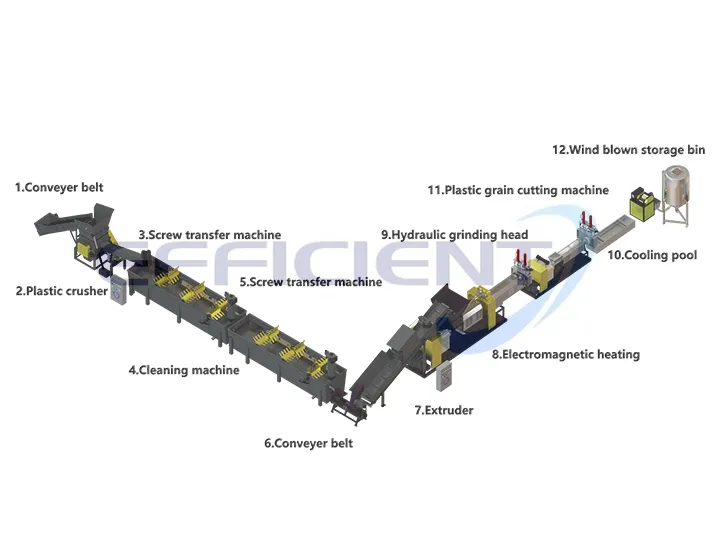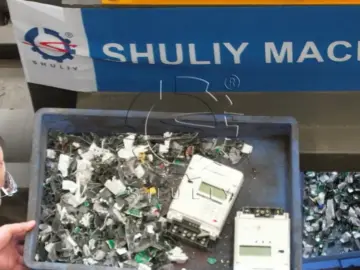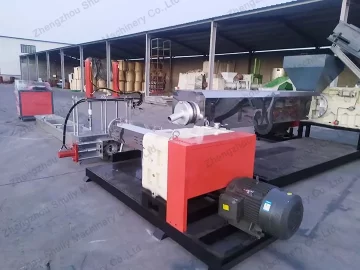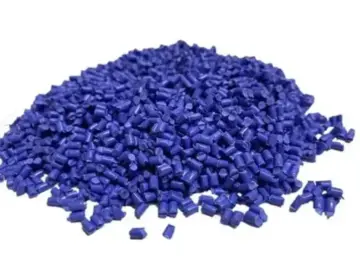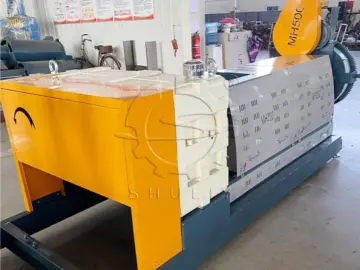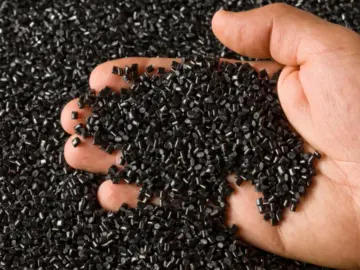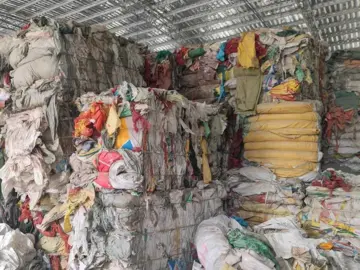The complete name of PCR is Post-Consumer Recycled Material, which refers to waste plastics generally generated after circulation, consumption and use, such as plastic shopping bags, plastic pots and plastic packaging. After recycling, these waste materials can be turned into valuable raw materials for industrial production, realizing the material of resource regeneration and recycling. PCR materials can cover a wide range of plastic types such as PET, PE, PP, HDPE, etc…
عملية إعادة تدوير البلاستيك بعد الاستهلاك
تتضمن عملية إعادة تدوير البلاستيك بعد الاستهلاك الخطوات التالية.
Sorting: Sorting is the first step in all plastics recycling. This is done by sorting plastics by type (available materials PP HDPE, LDPE, LLDPE, PVC ABS, EPS EPE etc.), color, and form of production (plastic bags, rigid plastics, Styrofoam, etc.).
Shredding: After sorting, the plastics will be crushed by a plastic shredder, and each category of plastic will be crushed separately before moving on to the next recycling process.
Washing: Crushed into small pieces, the plastic waste will be washed to remove oils and contaminants.
Drying: If the raw material has too much moisture during the pelletizing process, a large amount of water vapor will be generated when it is heated, which will affect the pelletizing effect. Therefore, drying is required. Moisture can be controlled at 5-10% for soft materials and 3-5% for hard materials to allow for the next step in the recycling process.
Pelletizing: The final step in recycling is granulation. In this step, plastic waste that has been sorted, shredded, cleaned and dried is made into pellets. The recycling machinery used in this process includes plastic granulators, which melt the plastic by setting its melting point temperature according to the type of plastic, then it is drawn through a die head, cooled by water and finally cut into pellets by a granule cutter, which is the final product of post-consumer plastic recycling.
مزايا إعادة تدوير البلاستيك بعد الاستهلاك
Reduces the amount of plastic waste going to landfill
إن إعادة تدوير المواد البلاستيكية لتحويلها إلى كريات هي خطوة تقلل من كمية النفايات التي يتم إرسالها إلى مدافن النفايات وعادة ما تستغرق مئات السنين لتتحلل. إعادة التدوير الميكانيكية للمواد البلاستيكية تمنعها من تلويث البيئة في نهاية المطاف.
Reduce your company’s raw material costs
تعمل إعادة التدوير الميكانيكية على تقليل استخدام المواد الخام البكر من خلال الحصول على الكريات التي يمكن إعادتها إلى خط الإنتاج. وهذا يقلل من الأثر البيئي لاستخراج مواد جديدة.
Creating jobs
تتضمن إعادة التدوير الميكانيكية مراحل مختلفة يتم فيها إنشاء عدد كبير من الوظائف في مصانع إعادة تدوير البلاستيك؛ وتولد اثنتان من هذه المراحل المزيد من فرص العمل، بما في ذلك جمع المواد البلاستيكية والعمال المسؤولين عن عمليات إعادة التدوير الميكانيكية للبلاستيك.
Helping to develop a circular economy
تسمح إعادة التدوير الميكانيكية بإعادة إدخال نفايات البلاستيك إلى الإنتاج، وهو مظهر من مظاهر الاقتصاد الدائري.
حل فعال لإعادة تدوير البلاستيك بعد الاستهلاك
EFFICIENT Machinery’s Plastic Recycling Machines, available in second- and third-stage configurations with a high-strength shredder and wash-drying system, is the ideal solution for cleaning and drying HDPE, LDPE, LDPE, and polypropylene waste plastic bags and film. This plastic recycling line crushes, cleans, extrudes and pelletizes waste plastics to produce high quality recycled pellets.
